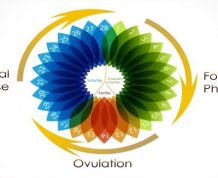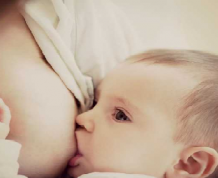Pregnancy begins when you conceive and results in the birth of your baby. There are numerous stages of development in between. Knowing exactly when the egg is fertilized is not possible and that is why, doctors estimate a date by finding out about your last menstrual cycle. Claim Your 20 Free Pregnancy Tests – Click Here
They choose the first day of this cycle and calculate forty weeks since that day the time period of your pregnancy. Going by this calculation you are actually not even pregnant during the first two weeks. There are eight stages of pregnancy in total and the time period lasts anywhere between 37 weeks and 42 weeks. It is also known as gestation.
Here are the eight stages of pregnancy explained for your knowledge:

This is the first stage of pregnancy, which signifies conception. The egg fuses with the sperm and this process is called fertilization. What happens is, when the sperm reaches the egg, it penetrates it. This process of fertilization takes 24 hours.

The outer membrane of the egg is known as zonapellucida. The sperm has to penetrate through this and enter the egg. Once it successfully penetrates the membrane, it reaches the nucleus of the egg and fuses with it. When the fusion occurs, the fertilized egg is converted into the zygote. Now the zygote will start to travel to the uterus from the fallopian tube. It is initially a single cell but then division occurs and the cell is divided into two cells. These two cells further divide to form four cells. The division continues.

As the cells of the zygote divided, the form a ball of sixteen cells. This takes approximately four days after fertilization. This ball is known as the morula. It is in the morula stage that it enters the uterus.

Even after the morula stage the division continues rapidly and a cavity called blastocele is formed in the middle of the ball of cells. This signifies the onset of the blastocyst stage. Now there are two different types of cells, namely embryoblasts, which are the cells inside the cavity and trophoblasts, which are the cells outside of the cavity.

After six to eight days of fertilization, implantation occurs. Implantation is the process of attachment of the blastocyst to the lining of the uterus. Here, hormone production also begins. The cells called trophoblasts release the hormone called hCG or human chorionic gonadotropin.
This hormone in turn signals the release of the female hormone progesterone. Progesterone then sends signals to the uterus to sustain the implantation and now, blood circulation between the blastocyst and the mother starts.

Placenta is a round-shaped organ, which is a connecting link between the mother and the uterus. This placenta is a temporary organ consisting of blood vessels. It facilitates the transfer of nutrients and oxygen from the mother to the fetus and transfer of waste from the fetus to the mother.

Division of cells begins again and the blastocyst gives rise to the embryo. In this stage the cells begin to elongate and form a human-like shape. The development of organs in the baby also begins. The embryo stage continues for a few weeks as the various organs develop. Between eight and ten weeks of pregnancy, except the spinal cord and brain, all other organs will have developed. Now the embryo develops into the fetus.

The fetus develops through the end of the pregnancy, until a standard 40 weeks. Between weeks 18 and 20, the fetus will begin making its presence known when the mother begins to feel he/she move. Brain and lungs develop until the last minute, readying itself for life on its own outside the womb. Sometime around 40 weeks gestation, the baby is ready to be born.










Comments